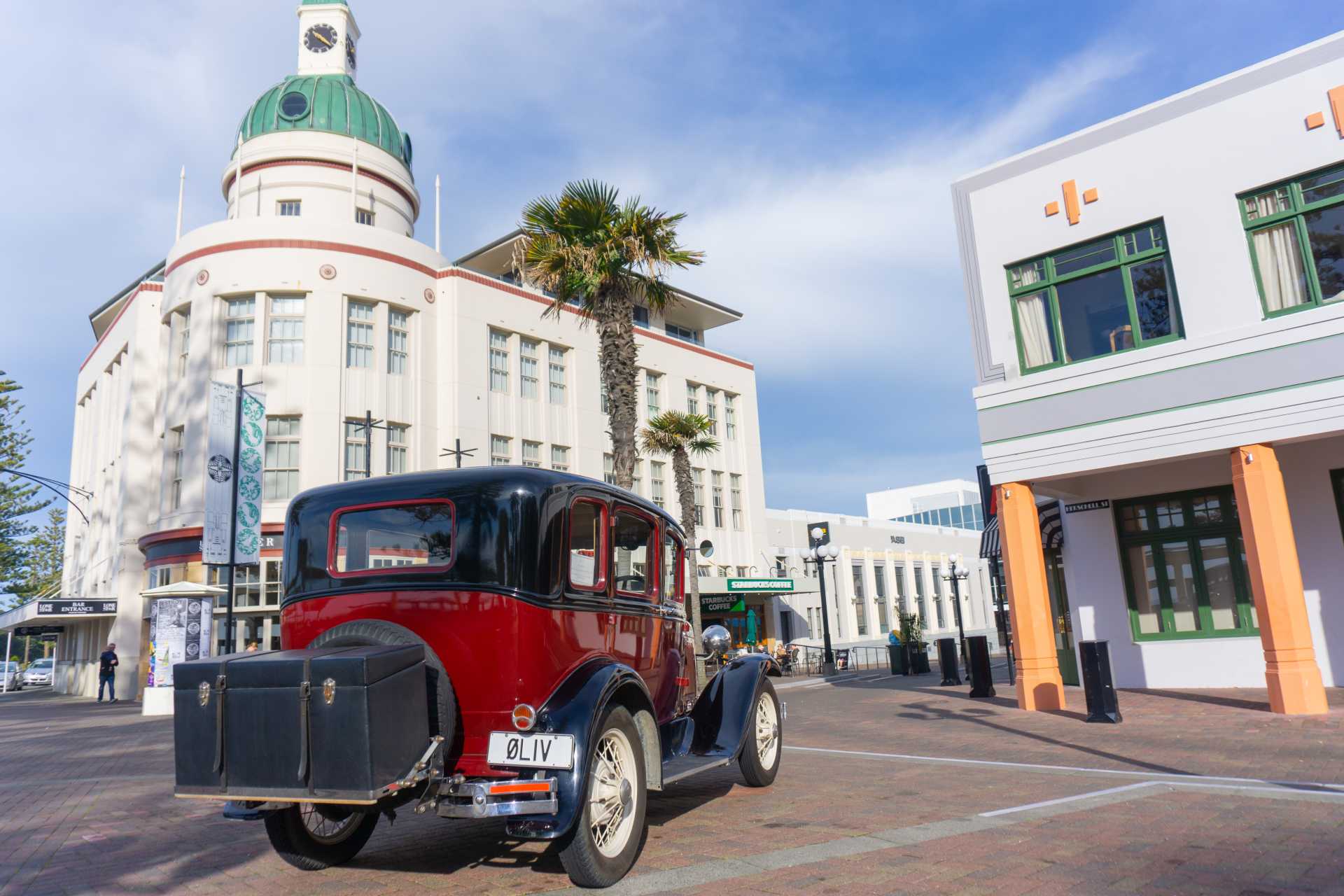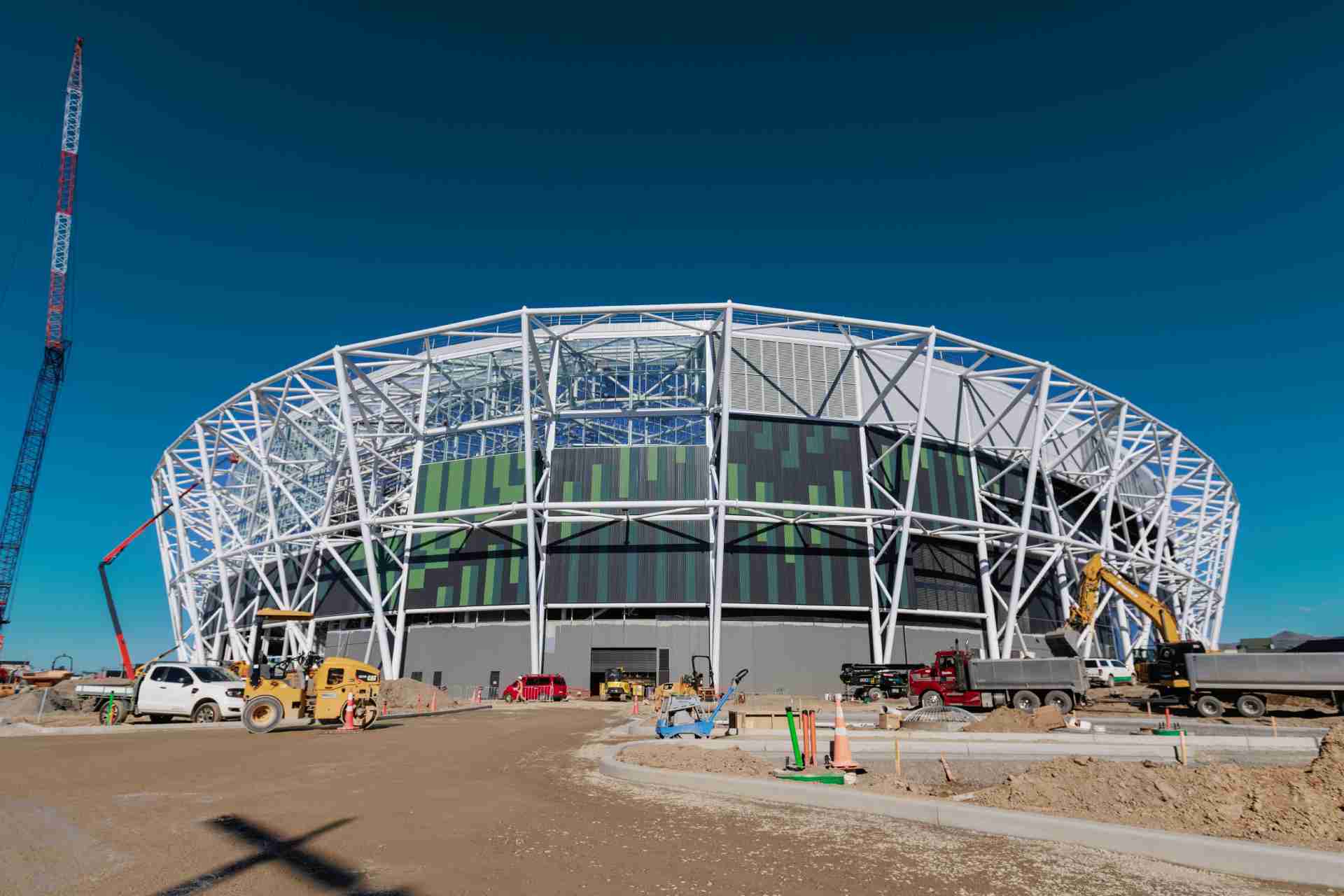

Te Kaha, Christchurch’s new state-of-the-art sports and events stadium, is on track to open in April 2026. One New Zealand Stadium at Te Kaha remains New Zealand’s busiest construction site. With ten in the sky, the project continues to host the largest concentration of long-term cranes in the nation.
The $683 million project is planned to accommodate audiences of 30,000 people for sports fixtures and 36,000 concertgoers. The Government and the Council approved the construction of the multi-functional arena in central Christchurch in 2020, located between Madras, Barbadoes, Hereford, and Tuam streets.
“The team has been working hard and continuing to make great progress on site,” Christchurch City Council Project Director Kent Summerfield says. “The entire roof system has been an extremely complex undertaking. We’ve had a range of personnel working on the roof at different stages of the project, from crane operators through to welders and roofers.”
The project’s key players include SCC, Australian-based BESIX Westpac, and Jing Gong Steel International. Smith Crane & Construction won the 2025 project of the year award from the New Zealand Crane Association for Te Kaha.
Per Christchurch City Council and industry reports, the stadium’s development has already generated millions of dollars in wages, equipment hires, and local supply chain contracts.
The stadium’s design, a collaboration between Populous and Warren and Mahoney, incorporates a fully covered roof made from ETFE (ethylene tetrafluoroethylene). This transparent material allows natural light to penetrate, supporting turf growth while protecting spectators from adverse weather.
A 2019 investment case for the project stated that for the facility to be competitive and attract international events, it requires a roof, high-quality acoustics, a fixed rectangular turf, and a minimum seating capacity of 25,000.
Roof construction has been one of the most technically challenging aspects of the project, requiring close coordination between crane operators, welders, and roofing teams. The roof alone comprises approximately 9,000 tonnes of steel.
The internal fit-out is equally ambitious. On the level one concourse, the fit-out of the food and beverage outlets has progressed nicely, Summerfield says. “There will be 32 of these outlets dotted around the perimeter of the concourse.”
At the same time, seating, landscaping, and technological infrastructure, such as advanced lighting, audio, and digital scoreboards, are scheduled for completion by the end of 2025. Following construction, the stadium will undergo an intensive testing and commissioning phase, followed by staff and operator training to ensure world-class operations at launch, according to the Christchurch City Council.
The first event scheduled for the stadium is the Super Rugby Super Round, which will take place over Anzac weekend, 24 to 26 April 2026.

Christchurch has lacked a top-level stadium for more than a decade, following the 2011 earthquakes that damaged Lancaster Park. The stadium is expected to energise the central city, spur additional development, reinforce Christchurch’s status as a sporting and cultural hub, and strengthen the local economy by drawing international visitors. Te Kaha is expected to draw 500,000 visitors annually, including 100,000 from outside Christchurch, generating $28 million for the local economy and over 1,000 jobs.
To make way for the stadium, extensive upgrades have been made to Christchurch’s surrounding infrastructure. Lichfield Street has been transformed into a civic spine, connecting the stadium directly to the city’s bus exchange and central amenities. Anticipating future growth, broader urban development objectives continue. Integrating bus, pedestrian, and cycling routes around Te Kaha aims to avoid overburdening local roads.
Separate from the $683 million figure, the surrounding infrastructure project cost $34 million, with $11.4 million earmarked to repair old water systems. Footpaths have been widened, crossings upgraded, and traffic flow modified on Tuam and Lichfield Streets to accommodate both pedestrian and vehicle volumes during high-capacity events.
Landscaping works have created open plazas and green spaces that allow for event overflow, casual public use, and safe pedestrian movement. Noise management and mitigation strategies have been incorporated into both the construction phase and future stadium operations, with acoustic modelling guiding the placement of sound barriers and the orientation of performance spaces to minimise disruption to neighbouring areas.
The latest RLB Crane Index shows Christchurch holding 18 long-term cranes in total, an increase of four since the previous March quarter survey. Te Kaha alone accounts for more than half of the city’s skyline activity.
The quarterly crane index released by quantity surveyors Rider Levett Bucknall (RLB) is a strong indicator of key projects and areas where construction is booming across the country.
Auckland still dominates crane numbers overall, with 59 in operation, which is more than the combined total of every other centre. In contrast, the reported decrease in cranes in Dunedin and Wellington’s skies signals industry downturns there.
Nationally, the Crane Index climbed to 116 in the September quarter, up by 11 cranes from earlier in the year. The increase reflects a rebound in both residential and non-residential work after several subdued quarters. Residential cranes account for one quarter of the national total.
RLB notes that while the uplift signals renewed momentum, the sector still faces challenges. Cautious investor sentiment, higher unemployment, and reduced migration are tempering growth, even as the outlook brightens with expectations of lower interest rates ahead.